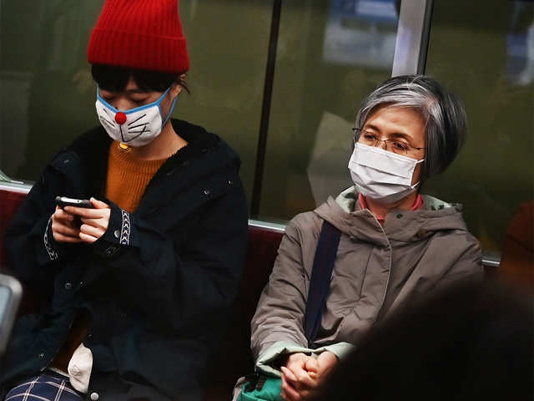GENEVA, Feb 25, 2020 (BSS/AFP) – The new coronavirus has peaked in China
but could still grow into a pandemic, the World Health Organization has
warned, as infections mushroom in other countries.
Financial markets have gone into a tailspin after grim news of deaths and
outbreaks in the Middle East, Europe and Asia, even as the Chinese epicentre
appeared to be calming, with the death toll at its lowest for three weeks.
But the situation is worsening in other countries, with more than 2,000
cases and 30 deaths reported abroad, prompting a raft of restrictions on
travellers from infected nations.
South Korea, Italy and Iran have logged particularly sharp increases in
infections and deaths, while several countries in the Middle East reported
their first cases of the novel coronavirus.
But WHO chief Tedros Adhanom Ghebreyes insisted the virus could still be
contained, praising China’s drastic quarantine measures in several cities for
helping to prevent an even bigger spread.
“For the moment we are not witnessing the uncontained global spread of
this virus and we are not witnessing large-scale deaths,” Tedros told
reporters in Geneva.
He added, however, that countries should be “doing everything we can to
prepare for a potential pandemic.”
The term “pandemic” is used to describe an illness that spreads across
numerous communities.
– South Korea hotspot –
South Korea, which has the largest number of cases outside China, reported
60 more infections and one more fatality on Tuesday, raising its death toll
to eight and total patients to nearly 900.
South Korea’s outbreak has centred around a religious sect in Daegu, the
country’s fourth largest city.
The country is on its highest “red” alert. As part of the containment
efforts, school holidays were extended nationally while the 2.5 million
people of Daegu were told to remain indoors.
The US Centers for Disease Control raised its caution level to warn
Americans against “all nonessential travel to South Korea”. Italy, which has
reported seven deaths and over 200 cases, has locked down 11 towns, while
upcoming football matches in its Serie A and the Europa League will be played
behind closed doors.
With police manning checkpoints to enforce a blockade, Prime Minister
Giuseppe Conte has said that residents could face weeks of lockdown.
– Iran fears –
The disease — officially known as COVID-19 — spread to new countries
including Afghanistan, Bahrain, Iraq, Kuwait and Oman.
At least 12 people have died in Iran, the highest toll outside China.
But there were concerns the situation might be worse than officially
acknowledged. The semi-official ILNA news agency quoted one local lawmaker in
hard-hit Qom — a religious centre — who said 50 people had died there.
The Iranian government denied the report, and pledged transparency.
Even so, authorities have only reported 64 infections in Iran, an
unusually small number that would mean an extremely high mortality rate.
Michael Ryan, head of WHO’s health emergencies programme, said a team from
the UN agency would be arriving in Iran on Tuesday.
But he cautioned against drawing any conclusions about the mortality rate.
Iran “may only be detecting severe cases” because the epidemic was still at
an early stage, he said.
Several countries have taken measures to prevent arrivals from Iran.
– China peak –
In China, 508 new cases were reported, with all but nine at the epicentre
in central Hubei province. Although that was up from 409 on Monday it was
much lower than new infections being reported just a week ago.
China’s death toll reached 2,663 on Tuesday, after 71 more people died.
WHO’s Tedros said the epidemic peaked in China between January 23 and
February 2.
China has placed some 56 million in Hubei and its capital under quarantine
since late last month, while other regions have enacted some forms of travel
curbs and measures to keep millions more people indoors.
Bruce Aylward, leader of a WHO mission of international experts, said late
Monday it was time for China to start lifting some of the restrictions.
“Obviously they want to get society back to a more normal semblance of what
probably is the new normal, because this virus may be around… for months,”
Aylward said.
Reflecting the disquiet, global markets plunged on Monday, with Wall
Street off 3.6 percent.
Bargain buying helped some Asian markets into the green on Tuesday, but
disquiet remained, with Tokyo dropping 3.0 percent by lunchtime.



